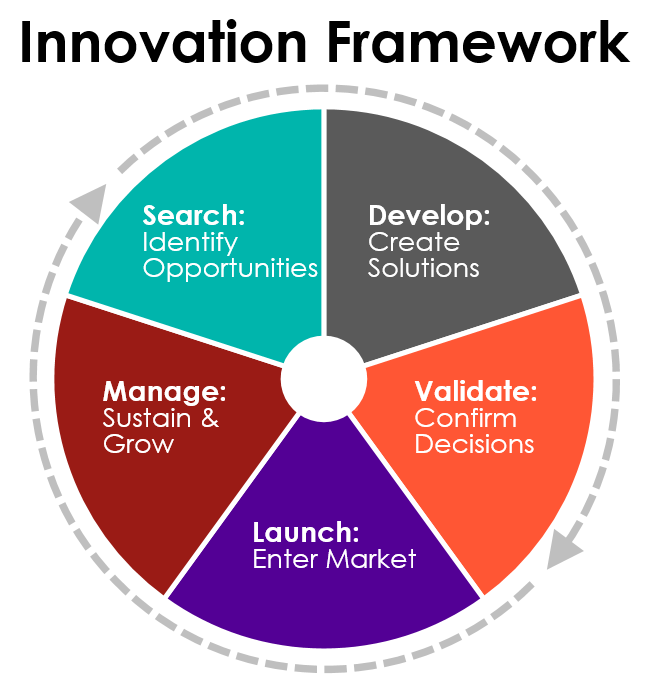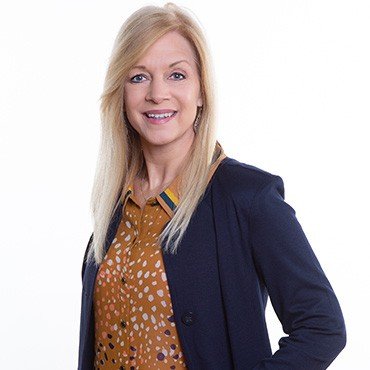
A Five-Part Guide to Successful Innovation
This is the first post in a five-part blog series about how businesses can innovate and adjust to market change using a five-phase framework for innovation. We break down one phase per blog, laying out the business challenges that typically align with each phase and the various ways to address them.
What Is Innovation?
There is no one answer to this question. For some, innovation calls to mind companies that create new, avant-garde products or services that address a need more quickly, efficiently and conveniently. Others might think of innovation as entailing radical changes in business models or perhaps entering new categories entirely.
In this past year, there certainly has been no shortage of stories about businesses of all sizes demonstrating agility and speed as they strive to survive and remain relevant in a world challenged by a once-in-a-century pandemic. This includes retailers pivoting their business to serve the changing needs of their communities, tech services such as Zoom stepping up to meet a rapid influx in demand, and automotive manufacturers producing personal protective equipment. While examples such as these illustrate one type of easy-to-understand innovation, there are lots of other ways businesses and professionals can innovate.
Innovation as a Journey
Escalent approaches innovation as a journey that places empathy—whether for consumers, a company’s customers or ends users—at the center of everything a business does. There are many ways to frame this journey; we’ve chosen a five-phase framework for its simplicity and its applicability to product, service, experience, communication and business model innovation.

Each phase is unique, distinguished by the types of business challenges it addresses.
In this post, we delve into the Search phase, which focuses on opportunity discovery. If you are asking questions such as the following, you’re in the right place:
- Are there needs or gaps in the marketplace that my company can fill?
- Are there new markets for my company to address?
- Which consumers should my company pursue?
Phase One of Innovation: Search—Identifying Opportunities
The first phase of the innovation framework—Search—is where opportunity discovery takes place. The objective of the Search phase is to understand consumers’ needs, what consumers want in an ideal world and, as such, where your business can fill the gaps that exist in the market. Additionally, the Search phase is designed to generate a functional understanding of these needs and desires, providing guardrails to ensure a company grounds any innovation initiatives in empathy and how its products and services can empower consumers to reach their objectives and goals. This is what allows a business or brand to achieve market success at the end of its innovation journey.
Here are two examples of Search phase challenges our clients faced and how we helped them innovate.
Example #1: Identifying the Future Needs of Consumers and New Strategies to Fill the Gaps
Our client had a strong reputation for providing some of the best-in-category services in the household care and management space. To protect and increase its leadership position, our client wanted to understand how it should refine its offerings and business practices to continually meet consumers’ fast-changing needs and expectations for managing their home.
As practitioners of Clayton Christensen’s Theory of Jobs to Be Done, we believe “jobs” represent individuals’ desire to move from their existing situation to an ideal state, and provide fresh perspective into how businesses should focus their innovation resources.
We conducted a series of Jobs-to-Be-Done interviews to explore how consumers feel about managing their household today and how they ultimately want to feel. We laddered those feelings up to a set of fundamental humanistic needs, including pride, belonging and security. From this, we defined a number of areas of opportunity, or jobs, such as “help me create a happy home life for myself and others.” These jobs served as a North Star for our client in developing new offerings, messaging and business processes designed to move consumers closer to their ideal state of home management.
Example #2: Using a Different Segmentation Strategy to Grow Business
A quick-service restaurant had an interesting challenge that focused on understanding what motivated its frequent customers. At face value, it was difficult to understand why these customers visited multiple times a week but at different times of the day. The company asked us to design a segmentation strategy that would identify areas of growth to better serve these customers.
Having conducted a wide variety of segmentations for businesses in various industries, we knew the typical segmentation approach—aligning one customer with only one segment—would not give our client meaningful insight into its high-frequency-multiple-occasion purchase model. Instead, we created a segmentation based on what was purchased and why the purchase occurred rather than on the profiles of individual customers. This allowed us to understand the various motivations behind consumers’ in-the-moment purchase behaviors. By combining needs, types of food and drinks, and other purchase drivers, we defined segments that represented occasions for interaction with our client’s products, brand or industry category. This permitted a single consumer to fall into more than one “occasion segment.”
Our occasion-based segmentation strategy helps a company understand the distinct occasions in which consumers purchase and interact with products or categories. Since it’s done on the category level, and not just for the brand, a company can find out where it’s performing well and discover new opportunities for growing its brand or market share. As a result, our client is leveraging this new occasion-based segmentation strategy to revise its product creation, communication and marketing strategies to better serve the needs of these occasion segments and spur brand growth.
If you are looking for new growth areas for your business, you may want to engage with a partner to help you identify the right moves for your company. Escalent takes into account your specific challenge, industry and outlook to help you identify specific areas of growth. We will help you chart a course of action to make the most of your business strategy and lead the way for others.
Next: We explore how to create relevant solutions in the Develop phase. Whether you already have an opportunity in sight or have uncovered attractive opportunities in the initial Search phase, the Develop phase will help you generate ideas and creative solutions to tap into those opportunities.
To learn more about how Escalent can help you innovate, send us a note.










